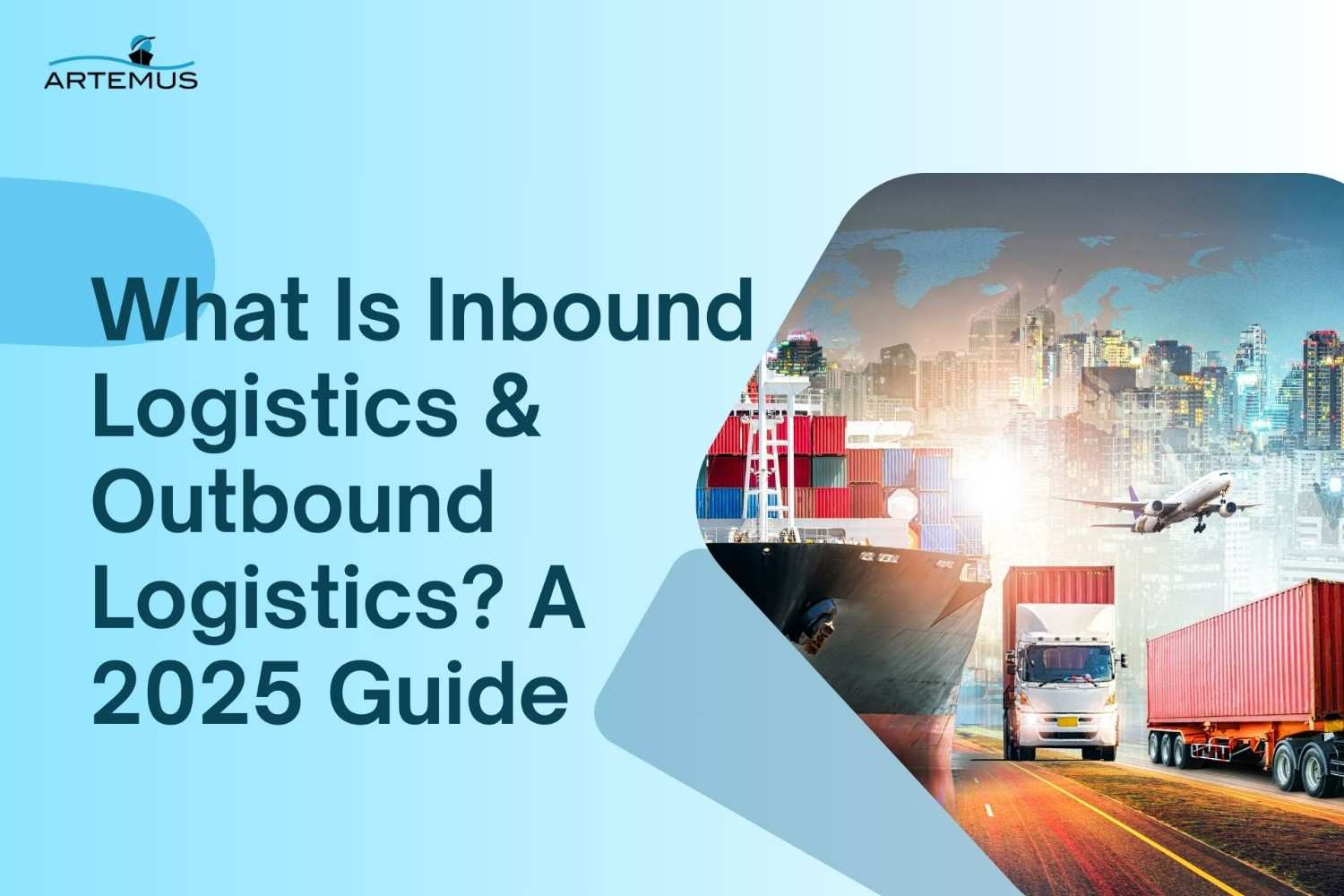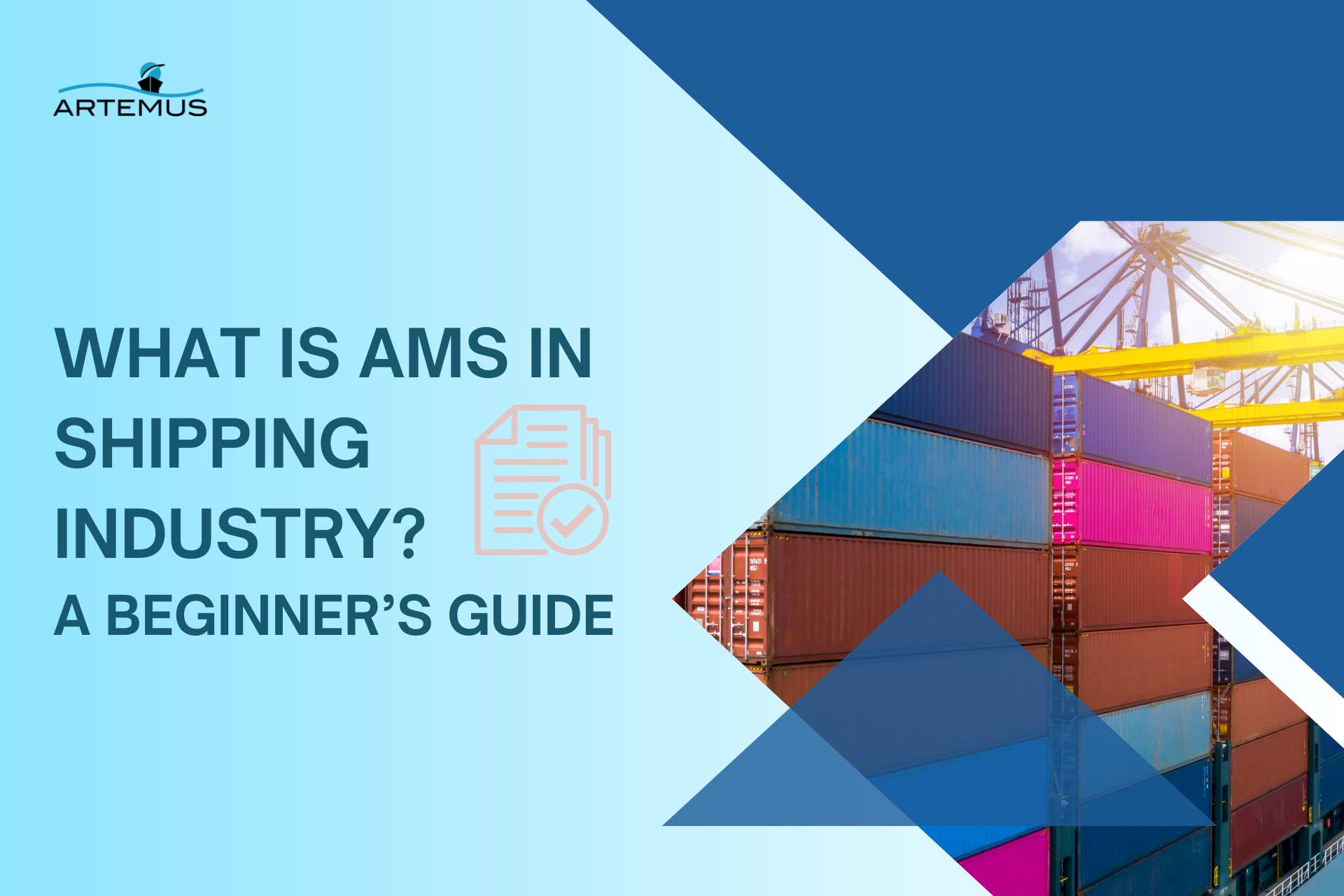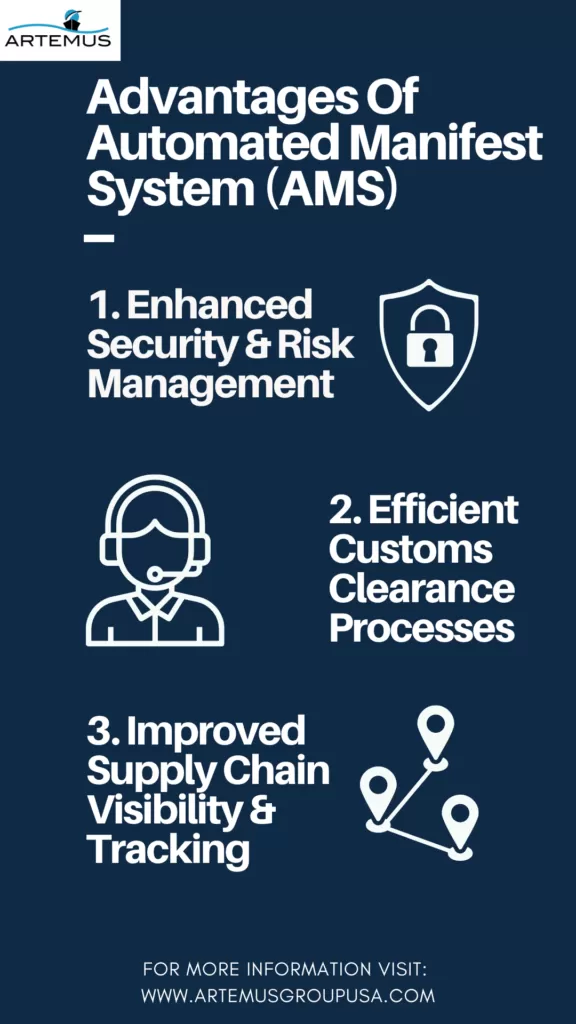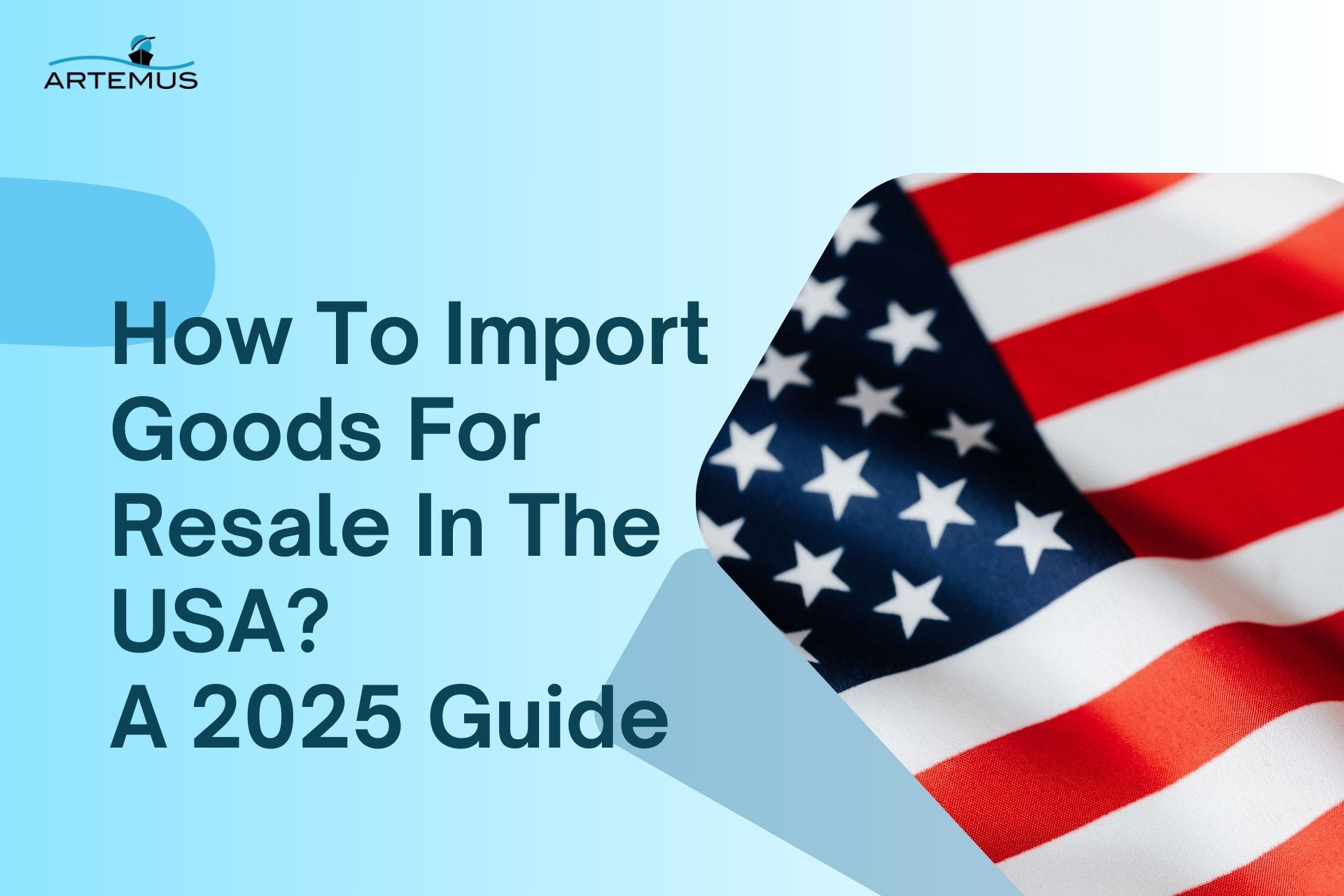
What Is Inbound Logistics & Outbound Logistics? A 2025 Guide
In the dynamic world of supply chain management, understanding the nuances of inbound and outbound logistics is crucial for operational

In the vast and intricate world of international shipping, efficiency, security, and timely information are crucial elements that ensure the smooth movement of goods across borders. One essential tool that plays a pivotal role in this process is the Automated Manifest System (AMS). AMS in the shipping industry is a sophisticated electronic system developed by the U.S. Customs and Border Protection (CBP) to streamline and enhance the customs clearance process for cargo shipments entering or exiting the United States.
By requiring advanced electronic information on shipments, AMS enables customs authorities to assess and mitigate potential risks while improving supply chain visibility. In this blog, we will delve into the intricacies of AMS in shipping, understanding its purpose, documentation requirements, benefits, and its role in shaping the future of the industry. Join us as we unravel the inner workings of AMS and explore how it revolutionizes the global shipping landscape.
Artemus is a trusted provider of compliance support for AMS (Automated Manifest System), assisting businesses in streamlining their shipping processes and ensuring accurate and timely submission of manifest information.
Table Of Contents
AMS, which stands for Automated Manifest System, is a crucial component of the shipping industry that facilitates the smooth flow of goods across international borders. It is an electronic system developed by the U.S. Customs and Border Protection (CBP) to collect, process, and analyze data related to cargo shipments entering or exiting the United States.
The primary objective of AMS is to enhance the security, efficiency, and accuracy of customs clearance processes while improving supply chain visibility. By requiring advanced electronic information on shipments, AMS enables customs authorities to assess and mitigate potential risks associated with the movement of goods, such as smuggling, terrorism, or illegal trade activities.
To comply with AMS requirements, importers, exporters, and carriers must file electronic manifests containing detailed information about the cargo, including its contents, packaging, transportation details, and parties involved. This data is submitted to CBP before the arrival or departure of the shipment, allowing customs authorities to conduct risk assessments and make informed decisions about cargo inspections.
AMS streamlines the customs clearance process, reducing the need for manual paperwork and manual data entry, thereby saving time and effort for all stakeholders involved in international trade. It also provides improved visibility into the movement of goods, enabling better tracking and monitoring capabilities throughout the supply chain.
Related: AMS Filing Penalty Cost: Most Common Pitfalls & Solutions
AMS (Automated Manifest System) documentation and requirements play a crucial role in facilitating efficient and secure international trade. To comply with AMS regulations, importers, exporters, and carriers must ensure accurate and timely submission of electronic manifests to the U.S. Customs and Border Protection (CBP). The following are key aspects of AMS documentation and requirements:
By understanding and adhering to AMS documentation and requirements, businesses can streamline customs clearance processes, enhance supply chain visibility, and ensure efficient and secure movement of goods across international borders.
Related: ISF Filing Requirements: A Step-By-Step Guide
The implementation of the Automated Manifest System (AMS) in the shipping industry offers several advantages that contribute to smoother operations, improved security, and enhanced efficiency in international trade. Some of the key advantages of AMS are:

AMS plays a crucial role in strengthening the security of cargo shipments. By requiring advanced electronic information on shipments, AMS allows customs authorities to conduct risk assessments and identify potential security threats before the cargo arrives or departs. This proactive approach enables authorities to mitigate risks associated with smuggling, terrorism, or illegal trade activities. AMS facilitates the screening and targeting of high-risk shipments, ensuring that security measures are focused on areas of concern.
AMS significantly streamlines customs clearance procedures, benefiting both businesses and customs authorities. With the electronic submission of manifest data, there is a reduction in manual paperwork and manual data entry errors. This streamlining leads to faster processing times, minimizing delays at border crossings and ports. By automating the information exchange between stakeholders, AMS eliminates redundant processes and simplifies the clearance process, resulting in cost and time savings for businesses.
AMS enhances supply chain visibility by providing accurate and real-time information on cargo movements. By electronically submitting manifest data, importers, exporters, and carriers gain access to critical shipment details, such as container numbers, contents, and transportation details. This visibility enables stakeholders to track and monitor their shipments throughout the supply chain, enabling better planning, inventory management, and customer service. Additionally, AMS facilitates the exchange of data between various parties involved in the supply chain, promoting better coordination and collaboration.
Related: ISF Filing Deadline: Timeline, Consequences, & Exceptions
In the world of shipping, there’s a term that often pops up and may leave many scratching their heads: AMS fee. AMS stands for Automated Manifest System, and the fee associated with it is a charge levied by carriers to cover the costs of submitting shipping information electronically to US Customs and Border Protection (CBP). This system allows customs officials to review and process cargo information before it arrives at US ports, streamlining the clearance process and enhancing security measures.
The exact amount of the AMS fee can vary depending on the carrier and the specifics of the shipment, but as a ballpark figure, it typically falls within the range of $25 to $50 per shipment. While this fee may seem like an additional expense, it’s an essential part of the logistics process for shipments entering the United States. By ensuring compliance with CBP regulations and facilitating smoother customs clearance, the AMS fee ultimately contributes to faster transit times and more efficient international trade.
In summary, the AMS fee in shipping covers the cost of electronically transmitting cargo information to US Customs and Border Protection through the Automated Manifest System. Though the exact amount can vary, it usually falls between $25 to $50 per shipment. While it may seem like an extra expense, it’s crucial for ensuring compliance and streamlining the customs clearance process, ultimately benefiting both shippers and recipients alike.
Related: Ocean AMS Filing Requirements: 7 Must-Have Documents
Automated Manifest System (AMS) is an integral part of trade compliance in the shipping industry. However, it’s important to understand how AMS compares to other trade compliance programs. Let’s explore the key differences and similarities between AMS and some of the prominent trade compliance initiatives:
AMS and ACE are both initiatives by the U.S. Customs and Border Protection (CBP) but serve different purposes. While AMS focuses on electronic manifest filing for cargo shipments, ACE is a broader system that encompasses various aspects of trade compliance, including entry processing, drawback, and import safety. While AMS is specific to manifest data, ACE provides a comprehensive platform for managing and streamlining customs processes.
Importer Security Filing (ISF), also known as 10+2, is a requirement for importers to submit advance cargo information to CBP. The key distinction between AMS and ISF is the timing of information submission. ISF requires importers to provide data at least 24 hours before the vessel’s departure, whereas AMS requires data before the vessel arrives or departs. While both programs aim to enhance security and risk management, their focus and data requirements differ.
AMS and C-TPAT have a shared goal of enhancing security in the supply chain but approach it from different angles. AMS focuses on electronic manifest filing and data submission to facilitate risk assessments and security screenings. In contrast, C-TPAT is a voluntary program that promotes security measures and best practices among importers, carriers, and other supply chain stakeholders. C-TPAT participants undergo a vetting process and implement security protocols to gain benefits such as reduced inspections and expedited clearance.
It’s important to note that AMS, ACE, ISF, and C-TPAT are interrelated and complement each other in ensuring trade compliance and security. They serve different purposes within the broader framework of customs regulations, risk management, and supply chain security.
Related: Who Is Responsible For AMS Filing? Know All Parties Involved
While the Automated Manifest System (AMS) offers significant advantages in international shipping, there are certain challenges and considerations that businesses should be aware of. Understanding these challenges can help stakeholders navigate potential obstacles and ensure a smooth implementation of AMS. Take into account the following key considerations:
Related: ISF Late Filing Fee: Exact Cost & 6 Tips To Manage Appeals

Artemus stands out as a leading provider of AMS software support, catering to businesses seeking top-notch compliance solutions for USA shipping. With their state-of-the-art technology and extensive industry knowledge, Artemus offers a comprehensive suite of tools and services to streamline AMS processes and ensure adherence to regulatory requirements.
Artemus’ AMS software is designed to simplify and automate the complex tasks associated with AMS filing, saving businesses valuable time and resources. Their user-friendly interface allows users to easily manage and submit manifest information, ensuring accurate and timely compliance. Moreover, Artemus provides continuous updates and enhancements to their software, keeping pace with evolving regulations and ensuring that clients stay ahead in the ever-changing landscape of USA compliance.
Related: AMS Fee In Shipping: Overview & 5 Key Considerations
The main difference between ISF (Importer Security Filing) and AMS (Automated Manifest System) is their focus and timing. ISF requires importers to submit advance cargo information at least 24 hours before a vessel’s departure, while AMS focuses on electronic manifest filing for cargo shipments, requiring data before the vessel arrives or departs.
The AMS fee is typically paid by the carrier or the party responsible for submitting the AMS filing, which is often the ocean carrier.
AMS charges in shipping refer to the fees associated with the submission and processing of electronic manifests through the Automated Manifest System (AMS). These charges are typically incurred by the carrier or the party responsible for filing the AMS documentation and can vary depending on the shipping company and the volume of shipments.

The Automated Manifest System (AMS) has emerged as a vital component of the shipping industry, revolutionizing customs clearance processes, enhancing security, and improving supply chain visibility. Throughout this blog, we have explored the significance of AMS in shipping, understanding its purpose, documentation requirements, and the advantages it offers.
AMS has proven to be a game-changer by enabling the efficient exchange of electronic manifest data, reducing manual paperwork, and minimizing delays at ports and border crossings. With its emphasis on risk management and advanced data analysis, AMS ensures the security of cargo shipments and helps customs authorities make informed decisions. Additionally, AMS promotes collaboration and coordination between stakeholders, paving the way for a more streamlined and transparent global trade environment.
Related: A Quick Guide On Import Security Filing: What Is ISF?

In the dynamic world of supply chain management, understanding the nuances of inbound and outbound logistics is crucial for operational

In today’s interconnected world, businesses rely heavily on global trade to expand their markets, access new resources, and drive growth.

Importing goods for resale in the USA presents a lucrative business opportunity, but navigating the complexities of U.S. customs regulations,
Get In Touch
Artemus’ Software Solutions for ISF, AMS, Japan AFR, eManifest Canada, & Panama B2B filings.